Abstract
Sidman and his colleagues derived behavioral tests for stimulus equivalence from the axiom in logic and mathematics that defines a relation of equivalence. The analogy has generated abundant research in which match-to-sample methods have been used almost exclusively to study interesting and complex stimulus control phenomena. It has also stimulated considerable discussion regarding interpretation of the analogy and speculation as to its validity and generality. This article reexamines the Sidman stimulus equivalence analogy in the context of a broader consideration of the mathematical axiom than was included in the original presentation of the analogy and some of the data that have accumulated in the interim. We propose that (a) mathematical and behavioral examples of equivalence relations differ substantially, (b) terminology is being used in ways that can lead to erroneous conclusions about the nature of the stimulus control that develops in stimulus equivalence experiments, and (c) complete analyses of equivalence and other types of stimulus-stimulus relations require more than a simple invocation of the analogy. Implications of our analysis for resolving current issues and prompting new research are discussed.
Full text
PDF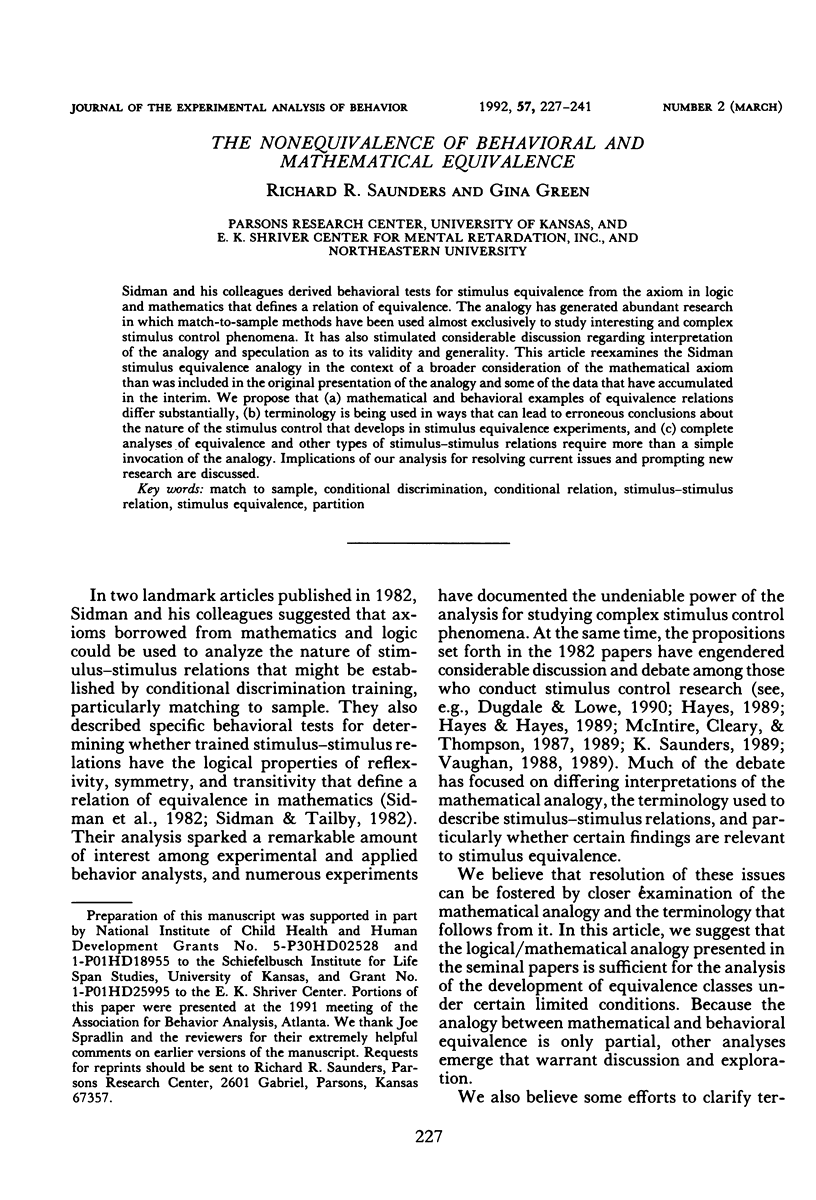
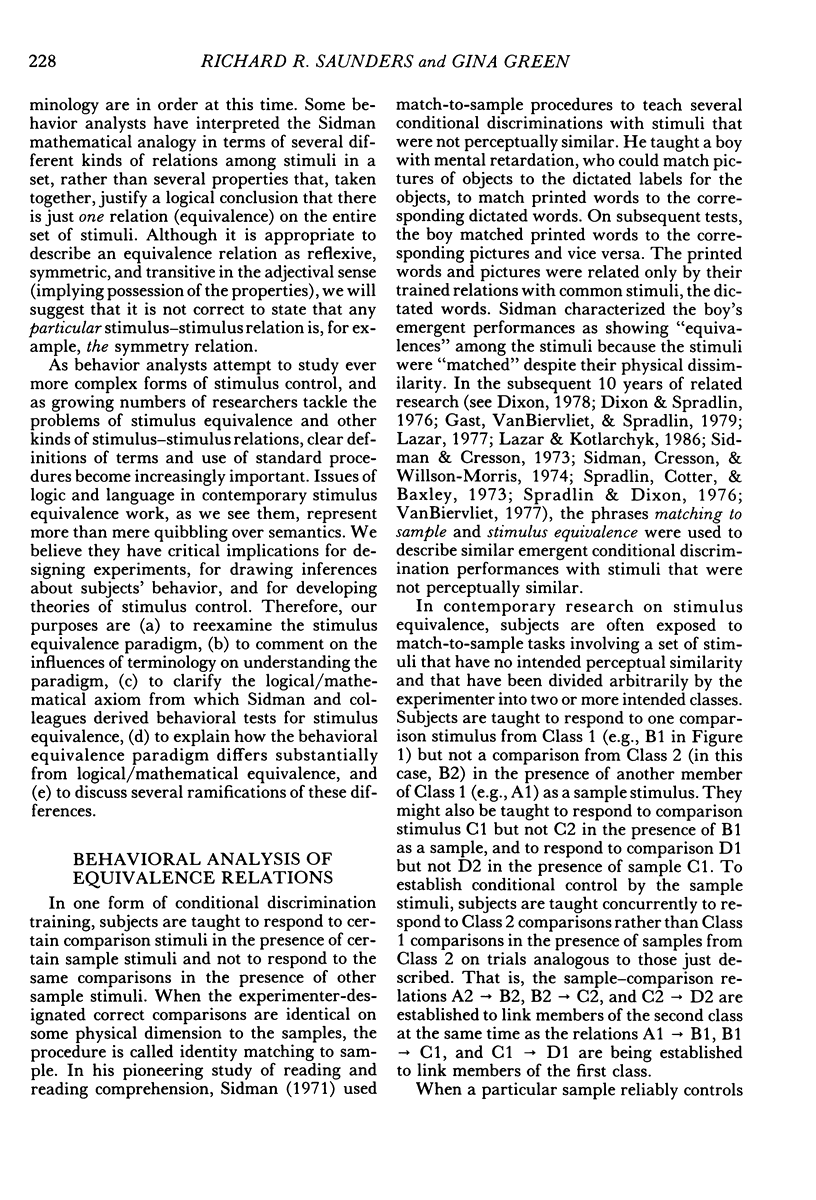
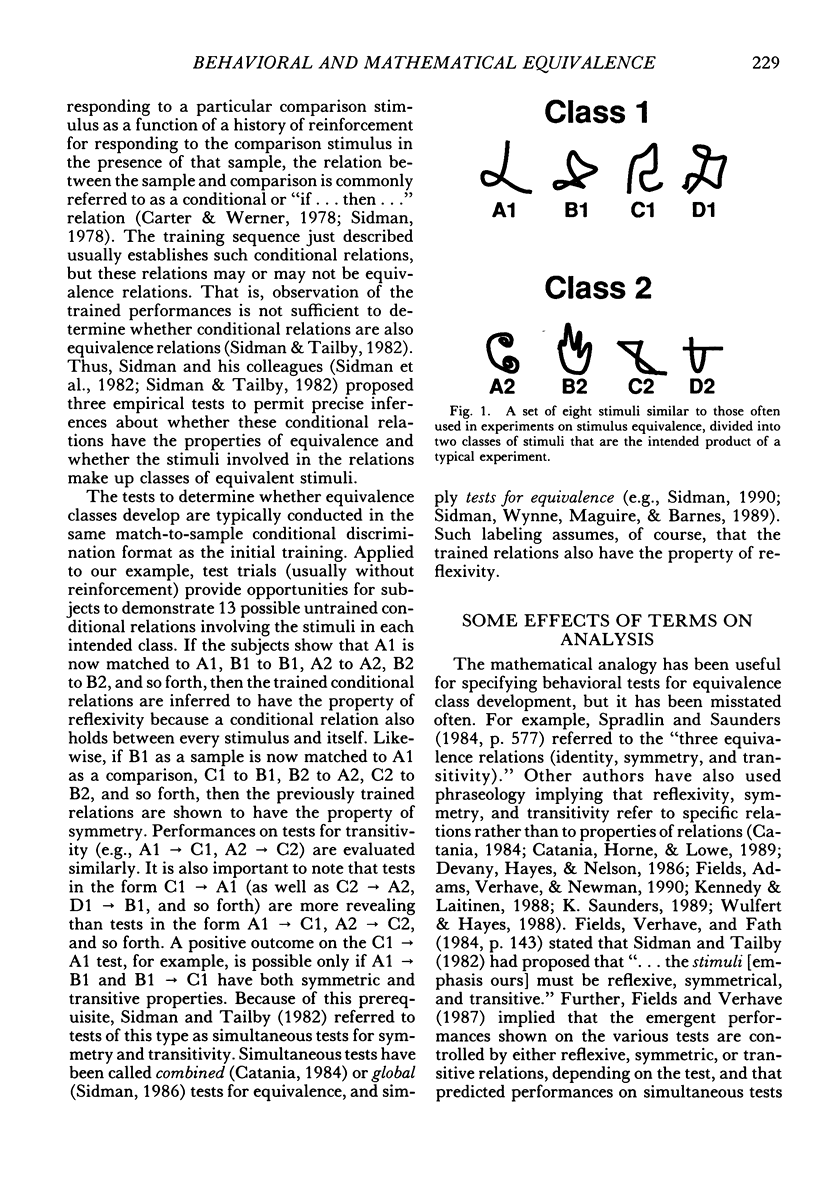
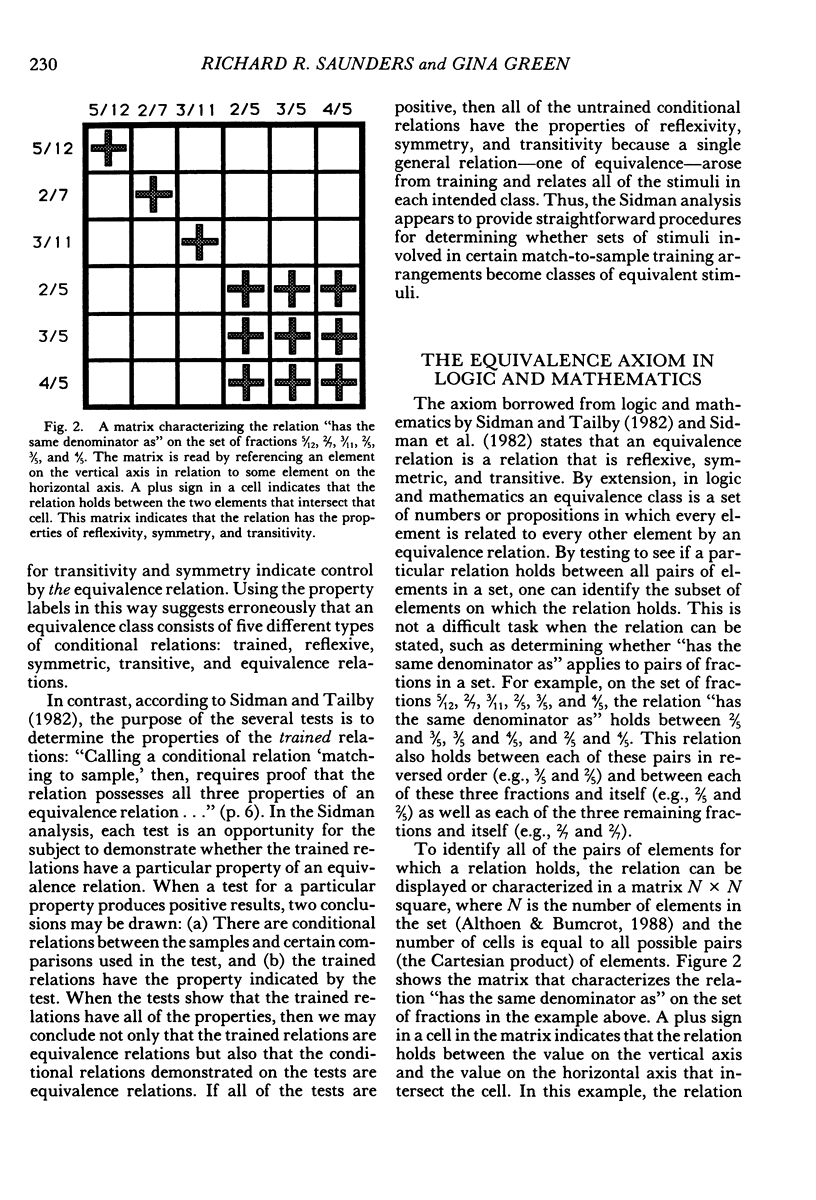
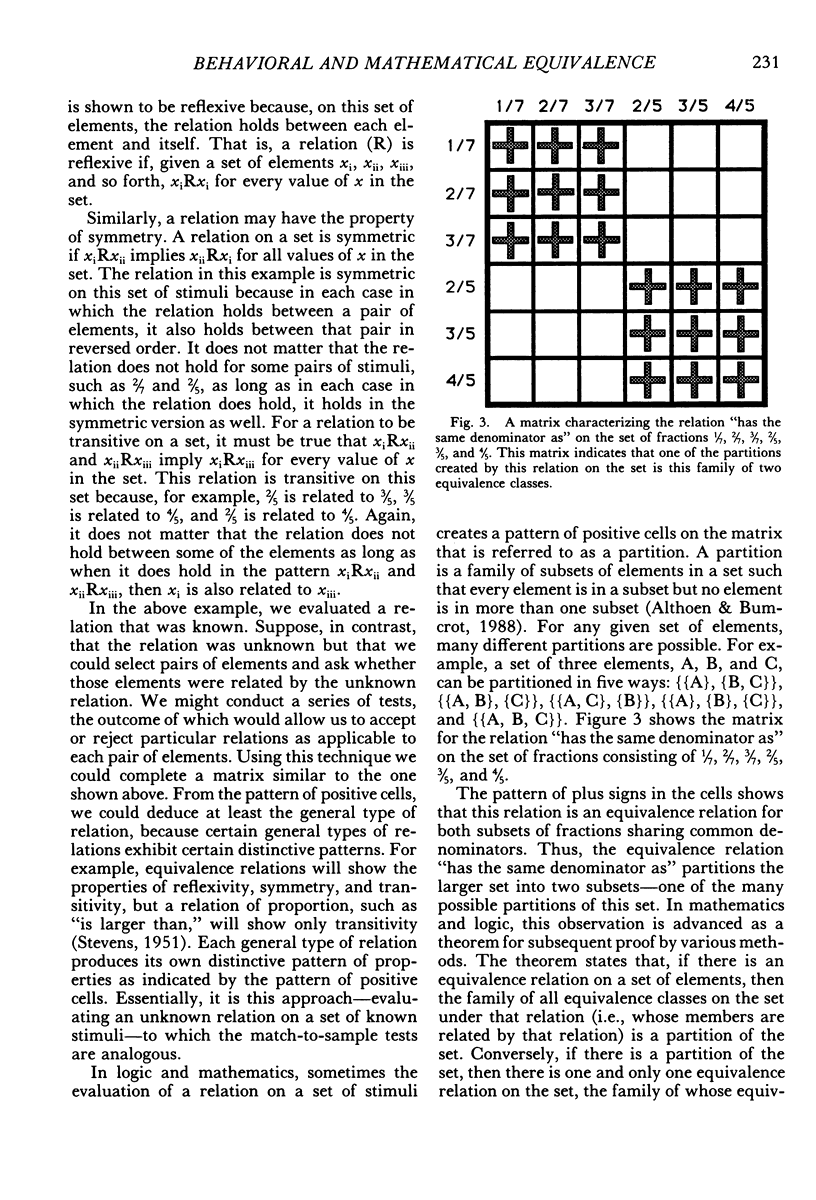
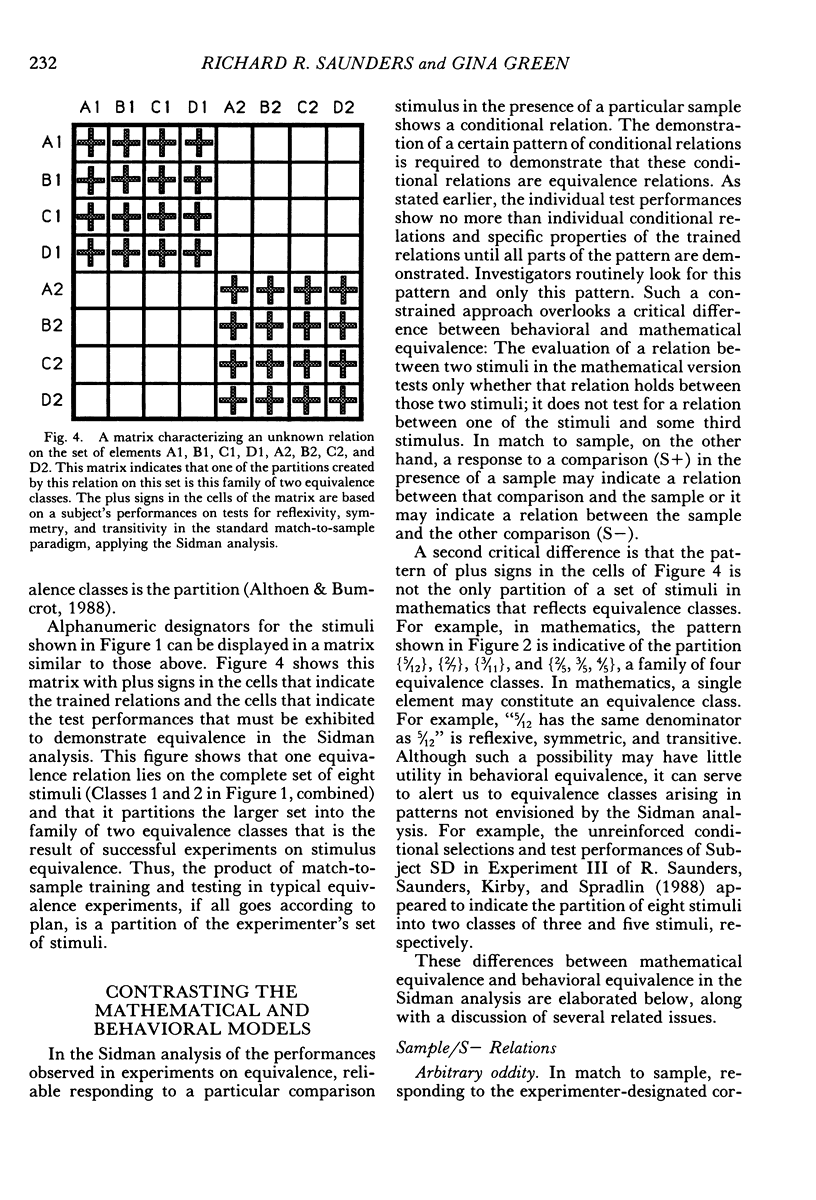
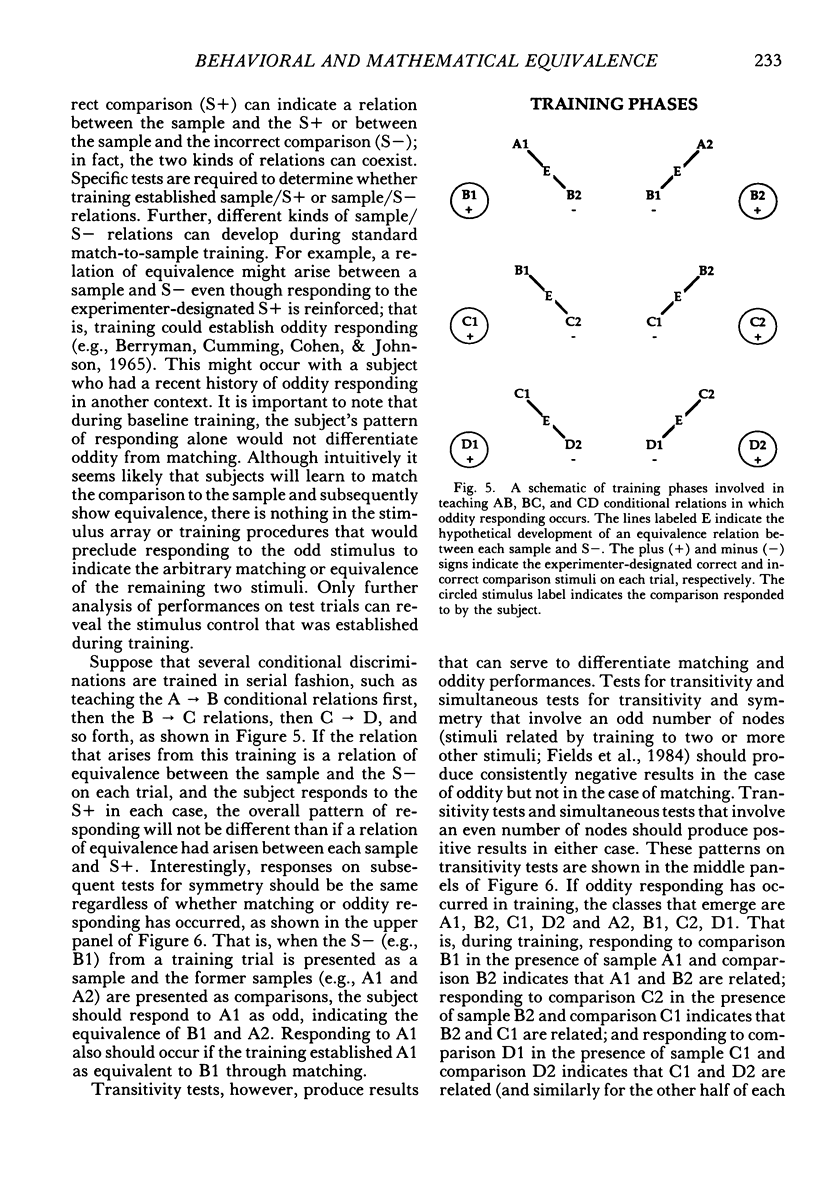
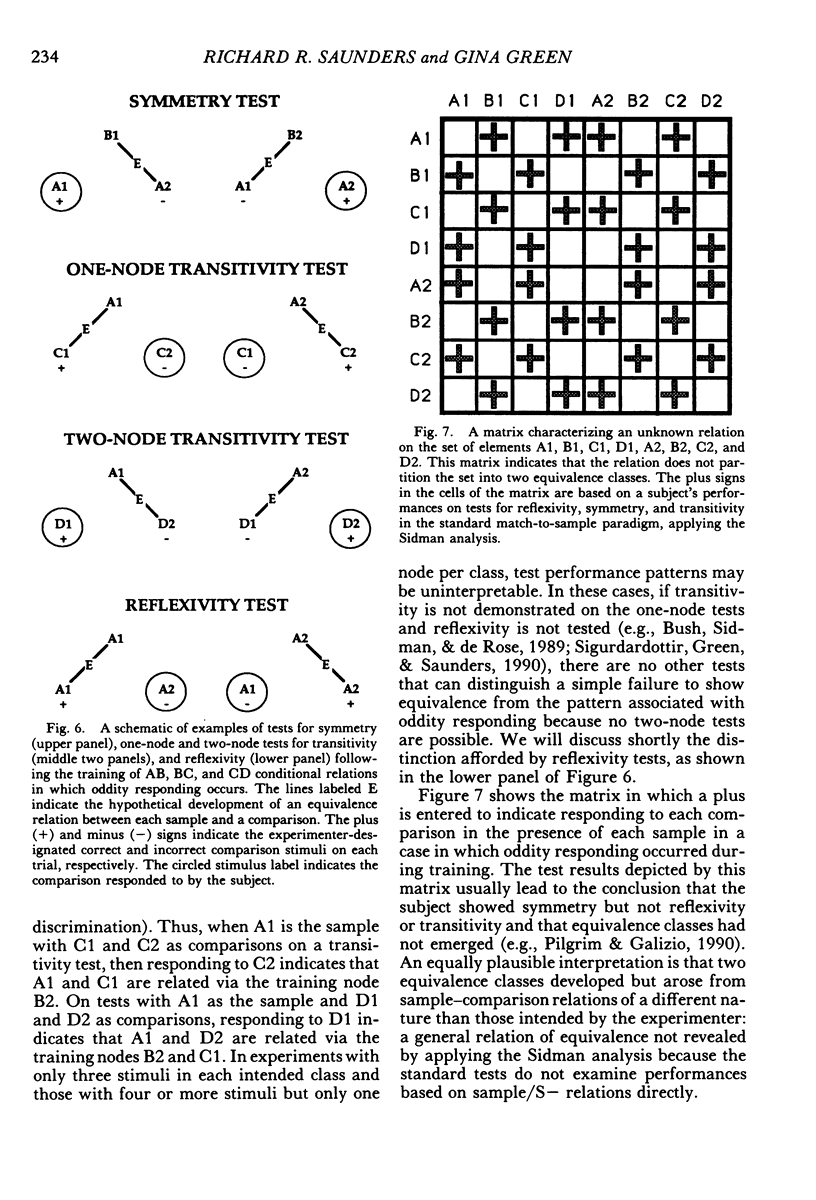
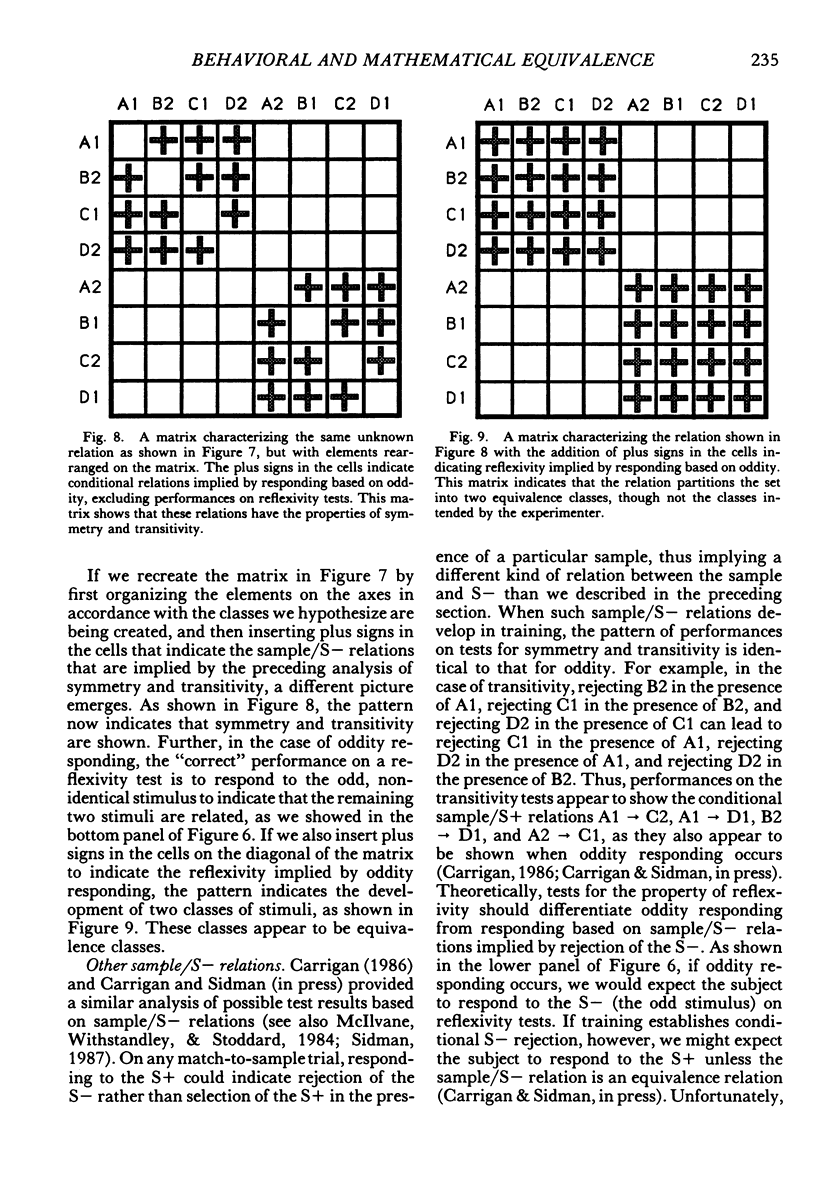
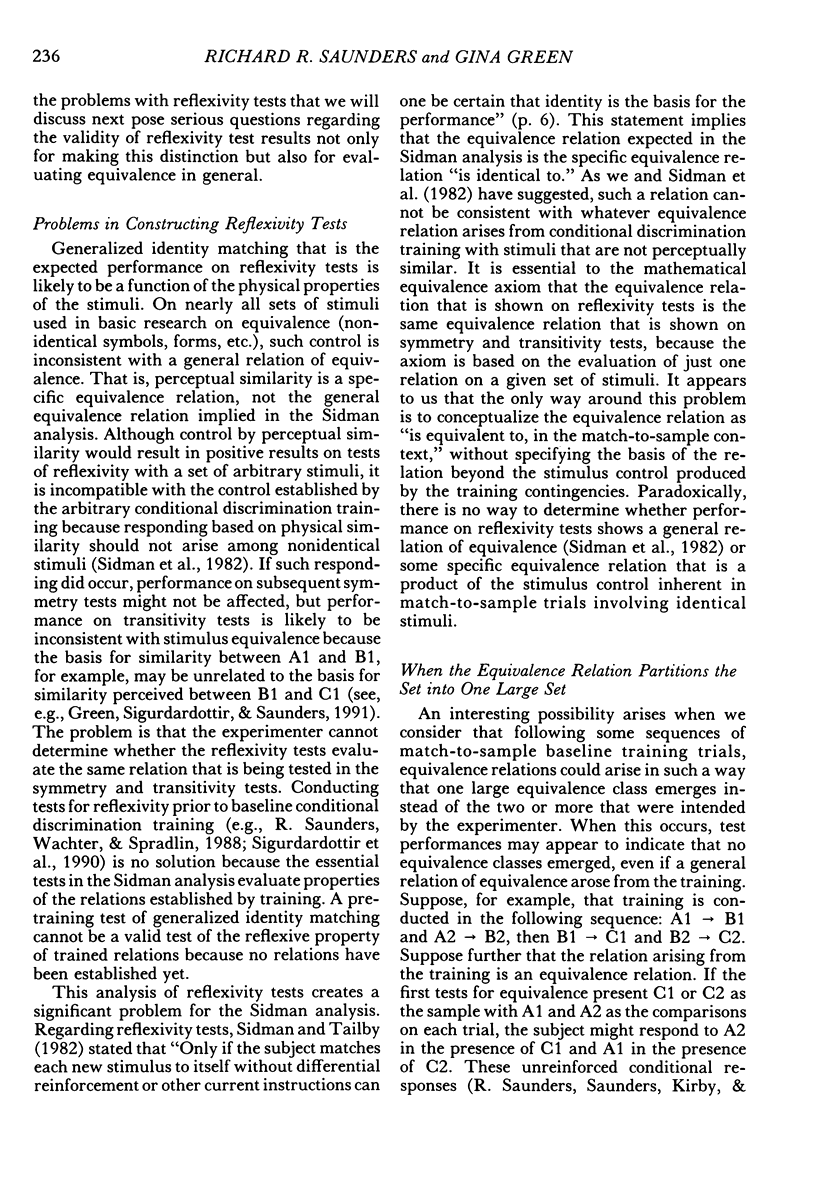
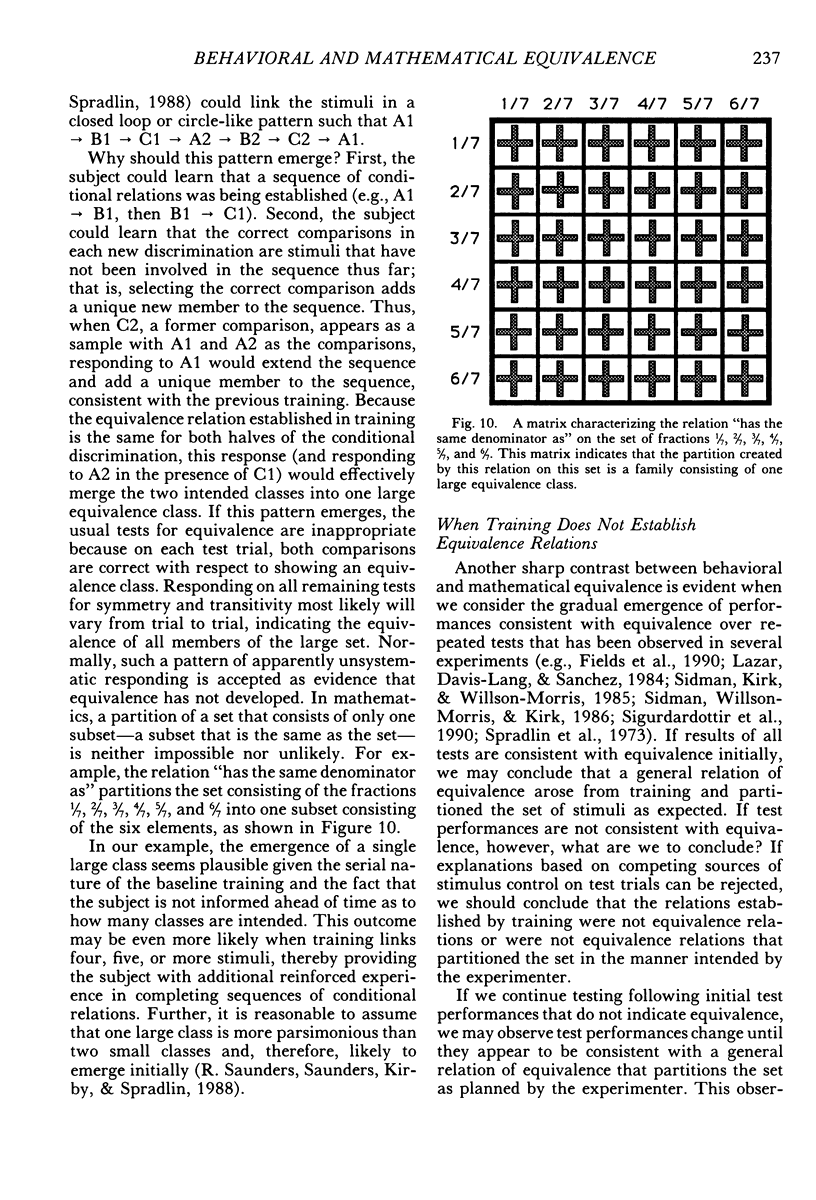


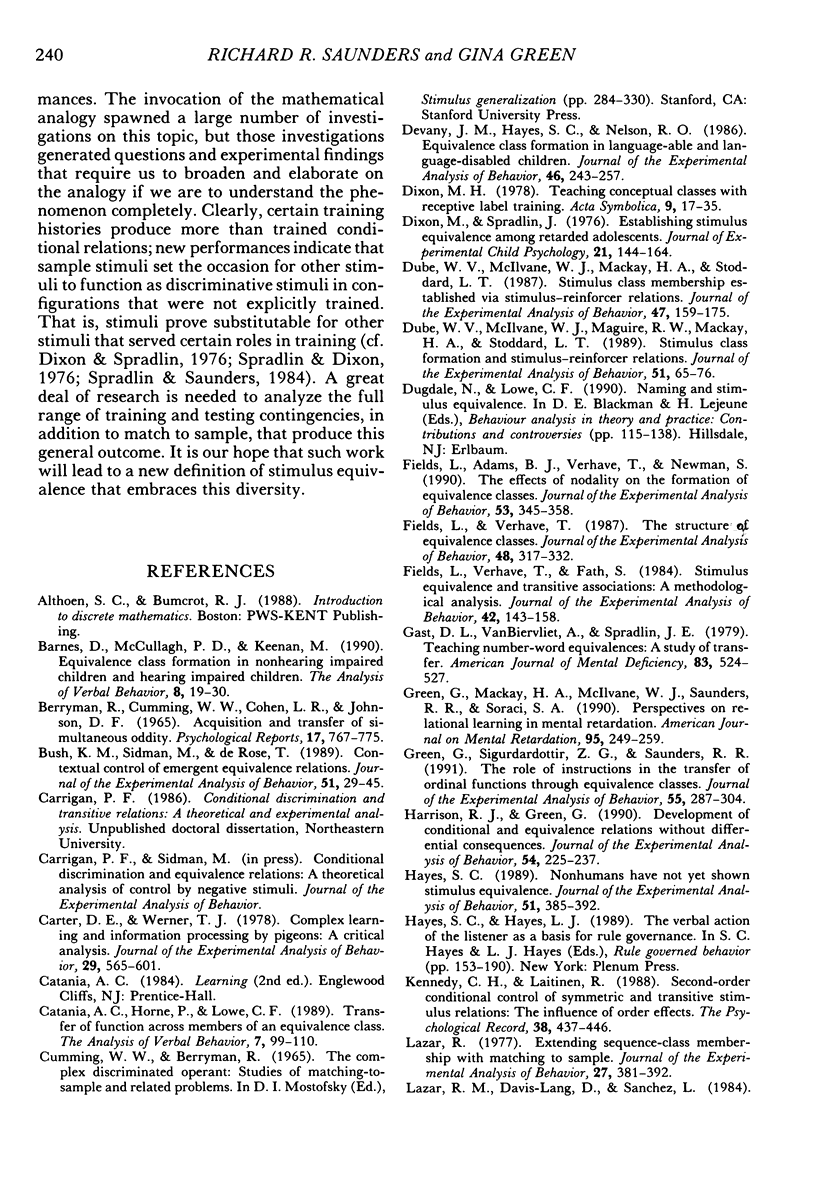
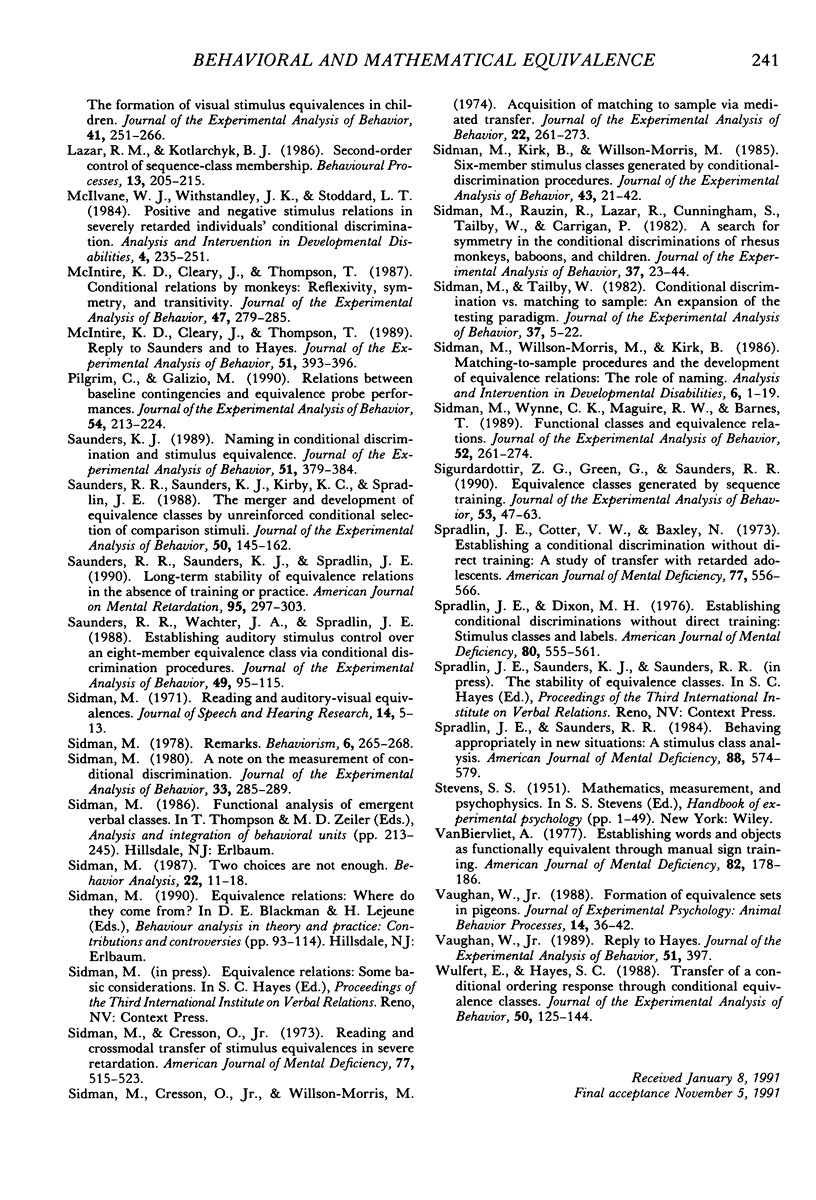
Selected References
These references are in PubMed. This may not be the complete list of references from this article.
- Berryman R., Cumming W. W., Cohen L. R., Johnson D. F. Acquisition and transfer of simultaneous oddity. Psychol Rep. 1965 Dec;17(3):767–775. doi: 10.2466/pr0.1965.17.3.767. [DOI] [PubMed] [Google Scholar]
- Bush K. M., Sidman M., de Rose T. Contextual control of emergent equivalence relations. J Exp Anal Behav. 1989 Jan;51(1):29–45. doi: 10.1901/jeab.1989.51-29. [DOI] [PMC free article] [PubMed] [Google Scholar]
- Carter D. E., Werner T. J. Complex learning and information processing by pigeons: a critical analysis. J Exp Anal Behav. 1978 May;29(3):565–601. doi: 10.1901/jeab.1978.29-565. [DOI] [PMC free article] [PubMed] [Google Scholar]
- Devany J. M., Hayes S. C., Nelson R. O. Equivalence class formation in language-able and language-disabled children. J Exp Anal Behav. 1986 Nov;46(3):243–257. doi: 10.1901/jeab.1986.46-243. [DOI] [PMC free article] [PubMed] [Google Scholar]
- Dixon M., Spradlin J. Establishing stimulus equivalences among retarded adolescents. J Exp Child Psychol. 1976 Feb;21(1):144–164. doi: 10.1016/0022-0965(76)90064-3. [DOI] [PubMed] [Google Scholar]
- Dube W. V., McIlvane W. J., Mackay H. A., Stoddard L. T. Stimulus class membership established via stimulus-reinforcer relations. J Exp Anal Behav. 1987 Mar;47(2):159–175. doi: 10.1901/jeab.1987.47-159. [DOI] [PMC free article] [PubMed] [Google Scholar]
- Dube W. V., McIlvane W. J., Maguire R. W., Mackay H. A., Stoddard L. T. Stimulus class formation and stimulus-reinforcer relations. J Exp Anal Behav. 1989 Jan;51(1):65–76. doi: 10.1901/jeab.1989.51-65. [DOI] [PMC free article] [PubMed] [Google Scholar]
- Fields L., Adams B. J., Verhave T., Newman S. The effects of nodality on the formation of equivalence classes. J Exp Anal Behav. 1990 May;53(3):345–358. doi: 10.1901/jeab.1990.53-345. [DOI] [PMC free article] [PubMed] [Google Scholar]
- Fields L., Verhave T., Fath S. Stimulus equivalence and transitive associations: A methodological analysis. J Exp Anal Behav. 1984 Jul;42(1):143–157. doi: 10.1901/jeab.1984.42-143. [DOI] [PMC free article] [PubMed] [Google Scholar]
- Fields L., Verhave T. The structure of equivalence classes. J Exp Anal Behav. 1987 Sep;48(2):317–332. doi: 10.1901/jeab.1987.48-317. [DOI] [PMC free article] [PubMed] [Google Scholar]
- Gast D. L., VanBiervliet A., Spradlin J. E. Teaching number-word equivalences: a study of transfer. Am J Ment Defic. 1979 Mar;83(5):524–527. [PubMed] [Google Scholar]
- Green G., Mackay H. A., McIlvane W. J., Saunders R. R., Soraci S. A., Jr Perspectives on relational learning in mental retardation. Am J Ment Retard. 1990 Nov;95(3):249–259. [PubMed] [Google Scholar]
- Green G., Sigurdardottir Z. G., Saunders R. R. The role of instructions in the transfer of ordinal functions through equivalence classes. J Exp Anal Behav. 1991 May;55(3):287–304. doi: 10.1901/jeab.1991.55-287. [DOI] [PMC free article] [PubMed] [Google Scholar]
- Harrison R. J., Green G. Development of conditional and equivalence relations without differential consequences. J Exp Anal Behav. 1990 Nov;54(3):225–237. doi: 10.1901/jeab.1990.54-225. [DOI] [PMC free article] [PubMed] [Google Scholar]
- Hayes S. C. Nonhumans have not yet shown stimulus equivalence. J Exp Anal Behav. 1989 May;51(3):385–392. doi: 10.1901/jeab.1989.51-385. [DOI] [PMC free article] [PubMed] [Google Scholar]
- Lazar R. M., Davis-Lang D., Sanchez L. The formation of visual stimulus equivalences in children. J Exp Anal Behav. 1984 May;41(3):251–266. doi: 10.1901/jeab.1984.41-251. [DOI] [PMC free article] [PubMed] [Google Scholar]
- Lazar R. Extending sequence-class membership with matching to sample. J Exp Anal Behav. 1977 Mar;27(2):381–392. doi: 10.1901/jeab.1977.27-381. [DOI] [PMC free article] [PubMed] [Google Scholar]
- McIntire K. D., Cleary J., Thompson T. Conditional relations by monkeys: Reflexivity, symmetry, and transitivity. J Exp Anal Behav. 1987 May;47(3):279–285. doi: 10.1901/jeab.1987.47-279. [DOI] [PMC free article] [PubMed] [Google Scholar]
- McIntire K. D., Cleary J., Thompson T. Reply to saunders and to hayes. J Exp Anal Behav. 1989 May;51(3):393–396. doi: 10.1901/jeab.1989.51-393. [DOI] [PMC free article] [PubMed] [Google Scholar]
- Pilgrim C., Galizio M. Relations between baseline contingencies and equivalence probe performances. J Exp Anal Behav. 1990 Nov;54(3):213–224. doi: 10.1901/jeab.1990.54-213. [DOI] [PMC free article] [PubMed] [Google Scholar]
- Saunders K. J. Naming in conditional discrimination and stimulus equivalence. J Exp Anal Behav. 1989 May;51(3):379–384. doi: 10.1901/jeab.1989.51-379. [DOI] [PMC free article] [PubMed] [Google Scholar]
- Saunders R. R., Saunders K. J., Kirby K. C., Spradlin J. E. The merger and development of equivalence classes by unreinforced conditional selection of comparison stimuli. J Exp Anal Behav. 1988 Sep;50(2):145–162. doi: 10.1901/jeab.1988.50-145. [DOI] [PMC free article] [PubMed] [Google Scholar]
- Saunders R. R., Saunders K. J., Spradlin J. E. Long-term stability of equivalence relations in the absence of training or practice. Am J Ment Retard. 1990 Nov;95(3):297–303. [PubMed] [Google Scholar]
- Saunders R. R., Wachter J., Spradlin J. E. Establishing auditory stimulus control over an eight-member equivalence class via conditional discrimination procedures. J Exp Anal Behav. 1988 Jan;49(1):95–115. doi: 10.1901/jeab.1988.49-95. [DOI] [PMC free article] [PubMed] [Google Scholar]
- Sidman M. A note on the measurement of conditional discrimination. J Exp Anal Behav. 1980 Mar;33(2):285–289. doi: 10.1901/jeab.1980.33-285. [DOI] [PMC free article] [PubMed] [Google Scholar]
- Sidman M., Cresson O., Jr Reading and crossmodal transfer of stimulus equivalences in severe retardation. Am J Ment Defic. 1973 Mar;77(5):515–523. [PubMed] [Google Scholar]
- Sidman M., Cresson O., Jr, Willson-Morris M. Acquisition of matching to sample via mediated transfer. J Exp Anal Behav. 1974 Sep;22(2):261–273. doi: 10.1901/jeab.1974.22-261. [DOI] [PMC free article] [PubMed] [Google Scholar]
- Sidman M., Kirk B., Willson-Morris M. Six-member stimulus classes generated by conditional-discrimination procedures. J Exp Anal Behav. 1985 Jan;43(1):21–42. doi: 10.1901/jeab.1985.43-21. [DOI] [PMC free article] [PubMed] [Google Scholar]
- Sidman M., Rauzin R., Lazar R., Cunningham S., Tailby W., Carrigan P. A search for symmetry in the conditional discriminations of rhesus monkeys, baboons, and children. J Exp Anal Behav. 1982 Jan;37(1):23–44. doi: 10.1901/jeab.1982.37-23. [DOI] [PMC free article] [PubMed] [Google Scholar]
- Sidman M. Reading and auditory-visual equivalences. J Speech Hear Res. 1971 Mar;14(1):5–13. doi: 10.1044/jshr.1401.05. [DOI] [PubMed] [Google Scholar]
- Sidman M., Tailby W. Conditional discrimination vs. matching to sample: an expansion of the testing paradigm. J Exp Anal Behav. 1982 Jan;37(1):5–22. doi: 10.1901/jeab.1982.37-5. [DOI] [PMC free article] [PubMed] [Google Scholar]
- Sidman M., Wynne C. K., Maguire R. W., Barnes T. Functional classes and equivalence relations. J Exp Anal Behav. 1989 Nov;52(3):261–274. doi: 10.1901/jeab.1989.52-261. [DOI] [PMC free article] [PubMed] [Google Scholar]
- Sigurdardottir Z. G., Green G., Saunders R. R. Equivalence classes generated by sequence training. J Exp Anal Behav. 1990 Jan;53(1):47–63. doi: 10.1901/jeab.1990.53-47. [DOI] [PMC free article] [PubMed] [Google Scholar]
- Spradlin J. E., Cotter V. W., Baxley N. Establishing a conditional discrimination without direct training: a study of transfer with retarded adolescents. Am J Ment Defic. 1973 Mar;77(5):556–566. [PubMed] [Google Scholar]
- Spradlin J. E., Dixon M. H. Establishing conditional discriminations without direct training: stimulus classes and labels. Am J Ment Defic. 1976 Mar;80(5):555–561. [PubMed] [Google Scholar]
- Spradlin J. E., Saunders R. R. Behaving appropriately in new situations: a stimulus class analysis. Am J Ment Defic. 1984 Mar;88(5):574–579. [PubMed] [Google Scholar]
- VanBiervliet A. Establishing words and objects as functionally equivalent through manual sign training. Am J Ment Defic. 1977 Sep;82(2):178–186. [PubMed] [Google Scholar]
- Vaughan W. Reply to hayes. J Exp Anal Behav. 1989 May;51(3):397–397. doi: 10.1901/jeab.1989.51-397. [DOI] [PMC free article] [PubMed] [Google Scholar]
- Wulfert E., Hayes S. C. Transfer of a conditional ordering response through conditional equivalence classes. J Exp Anal Behav. 1988 Sep;50(2):125–144. doi: 10.1901/jeab.1988.50-125. [DOI] [PMC free article] [PubMed] [Google Scholar]


